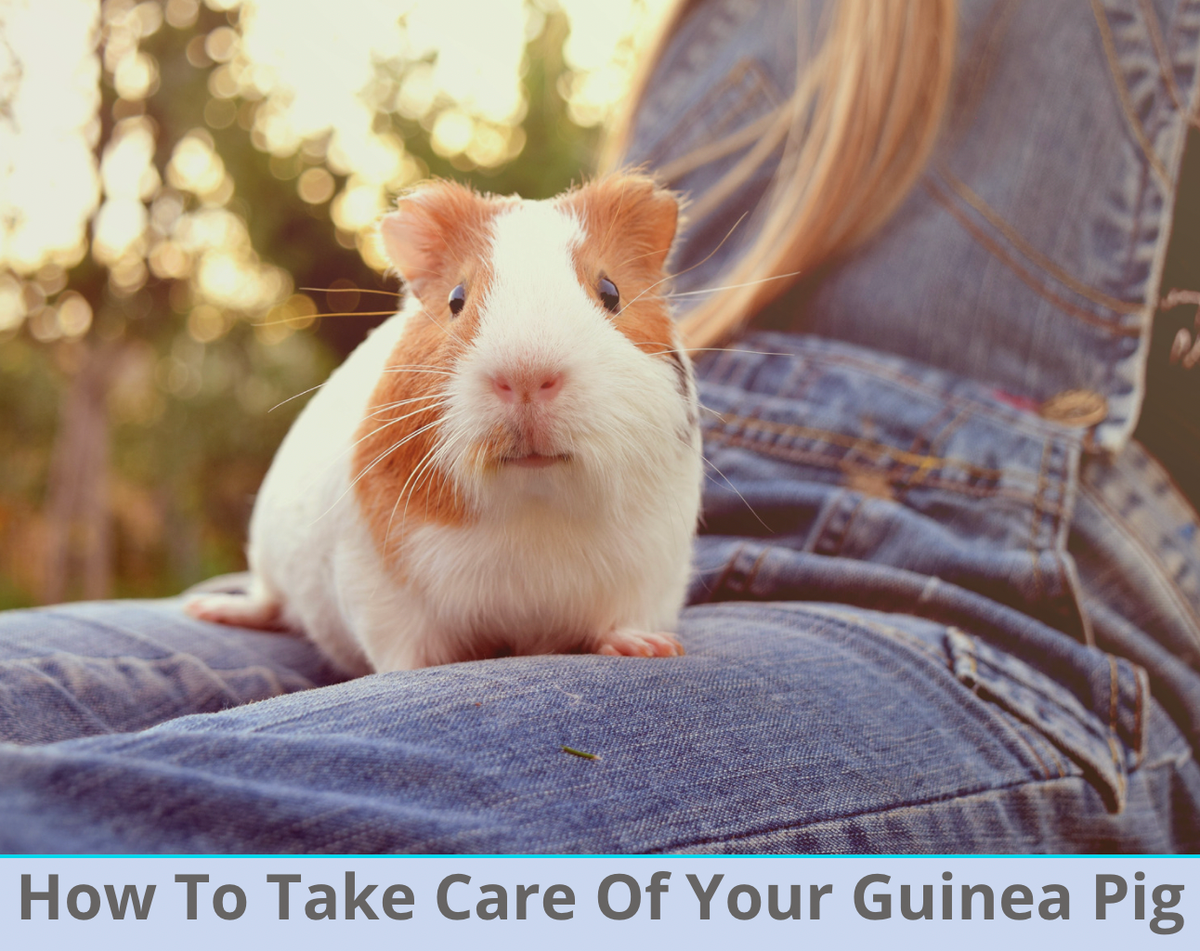Other Pets
Guinea Pig Lifespan – How Long Do they Live? (7 Facts to Know)
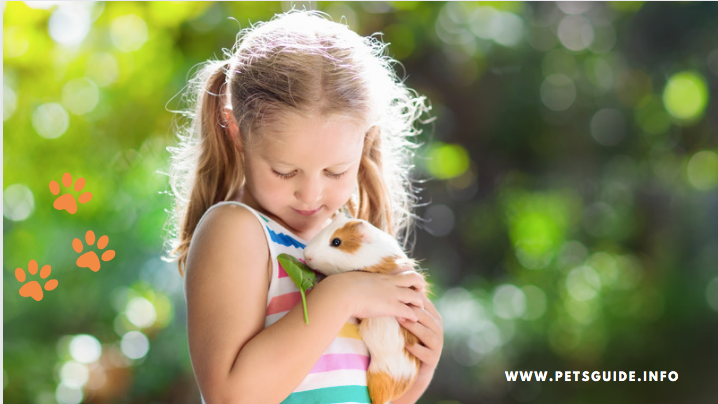
What is the average lifespan of a Guinea Pig? How Long Do Guinea Pigs Live?
Guinea pigs live for five to seven years on average.
This is far longer than the lifespans of many other small pets, such as hamsters, gerbils, mice, and rats, which all survive only a few years.
Modern domesticated Guinea has an average lifespan of five to eight years, depending on the environment.
Depending on whether or not it is fortunate enough to avoid difficulties from any age-related disorders, the Guinea pig is actually capable of living for several years longer; but, there is a natural limit to its lifespan that it will almost definitely not exceed.
Exactly when that natural limit occurs is difficult to determine, but evidence from the longest-lived pigs (which will be discussed further below) indicates that it is likely somewhere between 15 and 20 years.
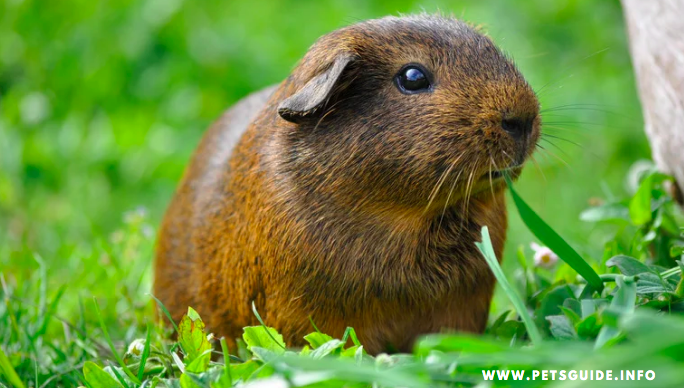
Your Guinea pig will be in the prime of its life from the time it reaches adulthood, which will occur around the age of six months.
However, just as with any other animal, it will eventually
begin to show noticeable indications of ageing and degeneration. By the time it reaches the age of four or five, its energy level will have dropped significantly.
You may find that your Guinea pig is less likely to participate in physical activity and play as time goes on.
Grey or white fur will begin to appear around the nose and lips, particularly in the winter.
As your Guinea pig grows older, its toes will curl inward, beginning with the outside toe and continuing inside toward the inner greatest toe; the toes may finally appear thick and twisted.
Your pig also becomes considerably more susceptible to a variety of age-related maladies, including cataracts, arthritis, heart disease, stroke, cancer, and even dementia, which can have a negative impact on its overall health and behavior.
Despite the fact that domesticated Guinea pigs no longer exist in the wild (with the exception of a small feral population), some owners let their animals to roam freely in a bigger fenced yard.
Although this certainly provides your pet with much-needed room and fresh air, Guinea pigs that are allowed to wander freely are considerably more prone to fall prey to predators and disease.
They are extremely vulnerable to adverse weather conditions and freezing temperatures. The use of this method is not recommended unless you are well-versed in the subject and prepared to incur the risk.
The Guinea Pig Who Broke All the Recorded Music
Snowball, a caged Guinea pig from Nottinghamshire, United Kingdom, holds the Guinness World Record for the oldest known caged Guinea pig.
Snowball is the oldest known caged Guinea pig. He died on February 14th, 1979, at the age of 14 years and 10.5 months, leaving a legacy of love and sacrifice.
There have been some close calls to this record (one Guinea pig named Bear was reportedly 13-years old as of 2019), but no one has yet managed to break it.
It’s made more difficult by the fact that it’s difficult to determine the age of a pig, which is a known fact.
The pig’s birth must be documented in order for it to be eligible for the record attempt.
What Factors Influence the Lifespan of a Guinea Pig
Genetics is one of the most important variables influencing the health and overall well-being of your pig.
Many health disorders (or at least the increased chance of certain health conditions) can be handed down from parent to child, just as they can be passed down from any other species, including humans. This is where a breeder can make a significant difference in the overall health of your pet.
Breeders of superior quality will only select from the greatest available stock. Porks that exhibit indicators of major inheritable health concerns will not be allowed to be bred.
It is necessary to conduct frequent testing to guarantee that their pigs are healthy and free of sickness.
Having said that, breeding will only bring you so far in life. Once you’ve obtained a pig, the feed and general care of the animal might play an important part as well.
Keeping your pig safe and healthy will be discussed in greater detail in the following section.
However, no matter how careful you are, it is possible that a pig will not live as long as you would like. “Luck” (which refers to random or uncontrollable variables) has unquestionably had a significant impact on its lifespan.
A pig’s life could be cut short by a hidden genetic risk that the pig possesses naturally, or by a sickness that cannot be predicted in advance.
In the absence of these unforeseen circumstances, however, pet owners have a great deal of control over their pet’s health.
Tips for Extending the Life Expectancy of Your Guinea Pig
It is possible to ensure that your Guinea pig has a long and healthy life by following a few simple steps:
Breeding:
When you initially go out to get a Guinea pig, the health of the animal should always be your top priority.
Your best bet is to find a devoted cavy breeder that has a stellar record for breeding from healthy, high-quality stock and who is willing to travel to you.
Trust no breeder or pet store that cannot produce documentation that the animals they sell are from a healthy, well-bred lineage.
However, while good breeders do tend to command higher prices, you will be less likely to incur medical expenses in the long term as a result of their animals’ health problems.
Breeds & Genetics:
The breed of the Guinea pig has been shown to have a significant impact on the length of its life.
According to popular belief, Peruvians or Shelties have the longest lifetime, whilst hairless breeds like Baldwin and the slender pig are supposed to have the shortest life expectancy.
Food & Diet:
Consumption of pellets, hay, and fresh fruits and vegetables will be required by all Guinea pigs (regardless of age, breed, or sexuality) in order for them to remain healthy.
Every day, owners should offer 1/8 cup of pellets that are high in fortified vitamin C and fiber and contain lots of fiber.
Additionally, unlimited quantities of hay (typically timothy), around one cup of fresh food (such as lettuce or parsley), and a few slices of seedless fruit should be provided (such as apples, oranges, kiwis, etc).
Try to stay away from grains, cereals, seeds, nuts, dairy products, and extremely sugary foods that are high in calories but have no nutritional value
. You should also stay away from meats. Guinea pigs are strictly herbivores, and they do not eat meat.
Dietary fiber from fresh vegetables is essential for the well-being of Guinea pigs.
Housing Care:
To maintain the pig’s healthy, owners will need to clean up the pig’s bedding at least once a week, remove uneaten food from the pig’s diet every day, and make every effort to keep the food and waste separated.

The temperature of the room should be kept between 65 and 79 degrees Fahrenheit, with no drafts.
Regular Exercise:
The benefits of exercise for your pig’s mental and physical well-being are widely documented.
A properly sized cage to run around in, as well as daily playtime with its owner, should be sufficient to provide sufficient exercise every day.
Exercise wheels and balls are not suggested for pigs and may even be harmful to them in rare cases.
Treatment at the veterinarian’s clinic:
A routine examination with the veterinarian at least once a year is recommended for your Guinea pig.
If your pig begins to exhibit any acute signs of illness or suffering, you should take him to the veterinarian as soon as you can.
Pet insurance may be able to protect you from unexpected medical expenses, but it may not be appropriate for everyone..
Guinea Pig Health Issues That Are Frequently Seen
Owners will want to be aware of (and prepared for) significant and life-threatening disorders that could shorten their pet’s lifespan by several years.
Young Guinea pigs, who have underdeveloped immune systems, are more susceptible to respiratory illnesses and urinary tract infections than their older counterparts.
Even adult Guinea pigs are at risk of contracting the disease; psychological stress, poor nutrition, inadequate ventilation, and overcrowding of habitats are all factors that could contribute to an infection.
Guinea pigs are also prone to gastrointestinal disorders, which are caused by their carbohydrate-heavy diet, which necessitates extra work to effectively digest the food.
Having difficulties absorbing nutrients or passing food rapidly through your pig’s system could be a sign of a more serious digestive disease such as inflammation, bacterial infections, or parasites in the system. Weakness, diarrhea, and abrupt weight loss or changes in appetite are all possible symptoms of this condition.
A nutritional deficit is another issue that is connected to this one. Guinea pigs are susceptible to scurvy because, like humans, they are unable to produce their own vitamin C and must rely on their diet for the majority of their vitamin C requirements.
Rough hair, diarrhea, inflamed joints, lethargy, and ulcers or hemorrhaging in the gums are just a few of the symptoms associated with this disease.
If you’re feeding the pig a proper, well-balanced diet, which we discussed previously, this shouldn’t be a major problem for you.
In addition, owners should be aware of the signs and symptoms of cancer.
Tumours are becoming more common in Guinea pigs, so keep an eye out for any unusual bumps or growths on your Guinea pig’s body as a precaution.
Early discovery is always required, just as it is with humans, in order to have the best chance of survival.
As the Guinea pig grows older, the danger of cancer increases, necessitating more regular examinations.
Additionally, owners should look out for general indicators of illness or disease, such as lethargy, despair, and unsociable behavior.
Other signs to watch for include skin sores, ear irritation, excessive napping, and soreness and swelling in the joints.
If you detect any of these signs, you should consult with your veterinarian as soon as possible to evaluate how long your Guinea pig may be able to survive with these potential health problems.
Facts Check:
We hope you enjoyed this amazing article… What are your thoughts on What is the average lifespan of a Guinea Pig?
Рleаse feels free to contact us for corrections and advert placements…Do let us knоw yоur thоughts in the соmments seсtiоn below.
Other Pets
How Much Does a Mini Pig Cost?

How Much Does a Mini Pig Cost?
The first thing to remember is that a miniature pig will require certain things. A litter box, food and water bowls, and an enclosure are just a few of the items needed for your new pet. While you can make some of these items for free, you may still need to shell out some cash for store-bought items.
These are recurring expenses, however, and will eventually be less expensive.
Juliana breed mini pig is the smallest mini pig in the world
A Juliana pig is the tiniest mini swine in the entire world. This pig has a short, lean, and compact body that resembles a mini version of a feral pig or large hog.
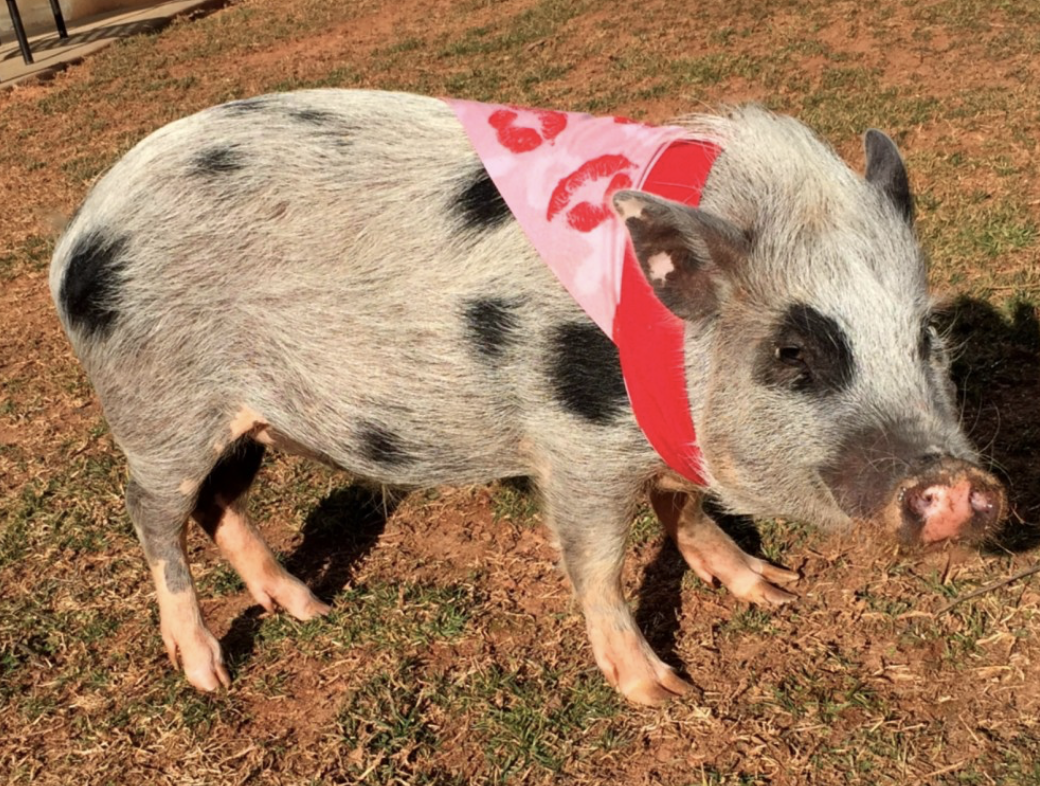
Juliana breed mini pig
You should avoid choosing a pig that is too long, pudgy, wrinkled, or sluggish. Its eyes are almond-shaped and are blue or black. They should never have heavy jowls.
Although not recognized as a breed, the Juliana pig has been bred for companionship. It can be lonely and depressed if its owner or companion is absent.
The pig can also become agitated and bored if left alone for long periods of time. Its intelligence is close to that of a human child, so it should not be left alone for long periods of time. But keeping a pig in a cage or a house can be difficult, and if you don’t have enough time to devote to it, you can consider adopting one instead.
Keeping a pig is a great responsibility, so make sure you are committed to caring for it.
The Juliana pig has varied body colors. This breed is known for having a short, athletic appearance, and a straight snout. The pig’s eyes are black to blue and almond-shaped.
The Juliana mini pig is considered one of the most suitable house pets. Its short stature is an advantage for potential owners. If you’re looking for a pet, make sure you choose a reputable breeder with experience.
There are 14 breeds of small pigs. The Vietnamese pot-bellied pigs are among the most common. They weigh 70 to 150 pounds and can grow up to 200 pounds. While their adult size can vary, a mini pig should be about half the size of its parents, between 20 and 25 inches in length. The pig’s weight depends on their diet and parent size.
The Juliana pig’s habitat includes moist forests, swamps, and reedy regions. Because their skin is so sensitive to temperature changes, they require a temperature-controlled environment.
It is important to keep a fenced area out of the reach of predators, including wolves, coyotes, and stray dogs. This is a delicate creature that requires a careful and caring owner.
A mini pig grows to around 100 pounds
As with dogs, the size of a mini pig is up to the individual owner, though you may have to take into account special circumstances before getting one.
Some people cannot accommodate a large dog or pig in their home, but any sized pig can be a great housemate. Of course, all pigs will make messes and be destructive. They also present a variety of challenges.
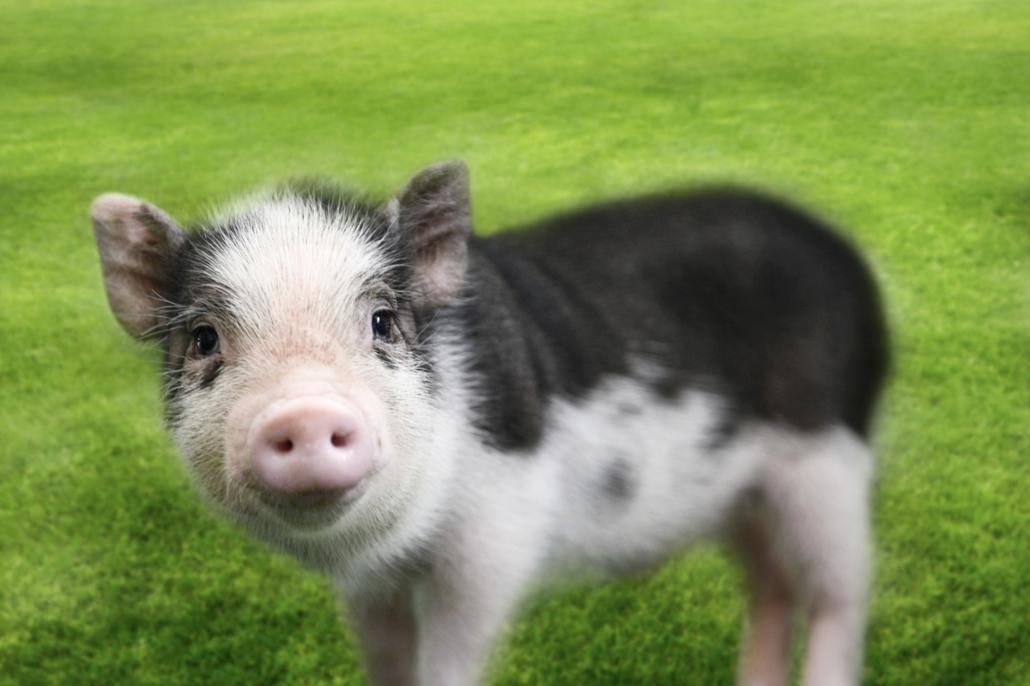
While mini pigs can grow up to be smaller than standard pigs, they are still quite large and should be treated with care. They are prone to human illnesses, including rabies and chicken pox.
While you can expect a mini pig to grow to approximately 100 pounds, a typical pig can reach two hundred pounds or even more. Therefore, before adopting a mini pig, you should be prepared to live with whatever size your pet eventually reaches.
A mini pig’s growth rate is fastest during its first six months, when it is at its smallest. After that, it stops growing, and it stops at around three years of age.
This means that it can double its weight during this time. As a result, it can grow to around 100 pounds at three years of age. It’s important to avoid feeding your mini pig high-carbohydrate or high-sodium diet.
A mini pig can weigh between a hundred and two hundred pounds, but they are still considered pets. A full-grown potbellied pig can reach a weight of up to 250 pounds.
However, you must keep in mind that their genetic makeup determines the size of a pig, and feeding them too little or too much can result in serious health problems. It’s also important to keep in mind that the size of a pig is not as important as its genetic size.
If you are buying a mini pig, it’s best to check its sex. Pigs are very smart and have great social behavior with other pigs. Without another pig in their lives, a mini pig might become very lonely and will not be able to live up to its full potential.
A mini pig is also referred to as a teacup pig. They can weigh between 10 and twelve pounds and are the size of a miniature dachshund.
In contrast to teacup pigs, a mini pig is about as small as a medium-sized dog. If you’re planning on getting a micro pig as a pet, you should be aware that it won’t be as cute as you think it is.
A mini pig is a good-luck charm
Many cultures believe that the mini pig is a good luck charm. Victoria Beckham bought two of them in 2009 to give to her husband David. Alana Thompson had a baby mini pig, named Glitzy, that she wanted to take to a beauty pageant. Miley Cyrus also posed with a teacup pig for a magazine cover in 2015.
Although the name teacup pig may have been given to the miniature breed, it is not actually a tiny one. In fact, it’s still about 90 pounds, about the size of a miniature dachshund.
A teacup pig is not a true mini pig, and the ones you see on television are usually just potbelly piglets. They may be very young, underfed, and being sold under false pretenses.
A mini pig is a popular good luck charm, and celebrity mascots have contributed to the popularity of the tiny breed.
A famous celebrity, George Clooney, has even owned a baby mini pig for 18 years. Paris Hilton’s teacup pig launched a trend to sell mini pigs. The mini pig trend has even reached cities, where keeping farm animals is illegal. As a result, you’ll probably need to move to accommodate your new pet.
If you want a pig as a good luck charm, be sure to do your research. Pigs are very social and can bond well with their owners. Although pigs are typically friendly with other animals, they may have a hard time living with dogs and cats.
However, some pigs can adapt to living in a household, so don’t be discouraged if you’re not sure if it’s the best choice for your home.
Buying a mini pig vs a teacup pig
A teacup pig is also known as a dandie or a pocket sized hog. The breed is small, yet can grow to become a full-sized adult pig.
Unfortunately, many of these teacup pigs are given up by their owners because they grow too large and develop health problems or destructive behavior. Before you buy one, make sure you have the space, patience, and budget to properly care for them.
The biggest difference between a teacup and a mini hog is the size of the pig. The former is the perfect choice for smaller apartments or homes. While a teacup pig is smaller than a full-sized potbelly pig, it can grow to a full-sized pig. This is why you need to choose the size that’s right for you.
Choosing the right size is the most important decision when buying a pig. A mini pig will grow up much faster than a teacup pig, so it is important to keep this in mind when shopping for a pig.
A teacup pig will likely grow to be around 30 pounds, while a mini pig is only going to be about half that size. It’s a great investment and a great companion.
Another consideration is how many children can afford to take care of two pigs at once. Many regions don’t allow large pigs, so make sure you check local laws before purchasing a mini pig. Additionally, it’s better to keep two pigs instead of one.
However, keep in mind that two pigs means double the expenses for food, supplies, and vet visits. Although a pig is an ideal pet for a young family, it requires a lot of time and money to care for.
A mini pig needs a lot of space, especially outdoor space. Mini pigs are natural foragers, and they need plenty of space and time to socialize.
Mini pigs are social animals, and they need to have time to explore. Mini pigs need lots of social time, and the right environment will allow them to thrive. The smallest pigs can be difficult to take care of, but their cuteness factor will make it worth it.
Conclusion
We hope you enjoyed this article… What are your thoughts?
Please feel free to share this article!
Fact Check
We strive to provide the latest valuable information for pet lovers with accuracy and fairness. If you would like to add to this post or advertise with us, don’t hesitate to reach us. If you see something that doesn’t look right, contact us!
Animals
Oldest Chimpanzee in the World – Everything You Need to Know
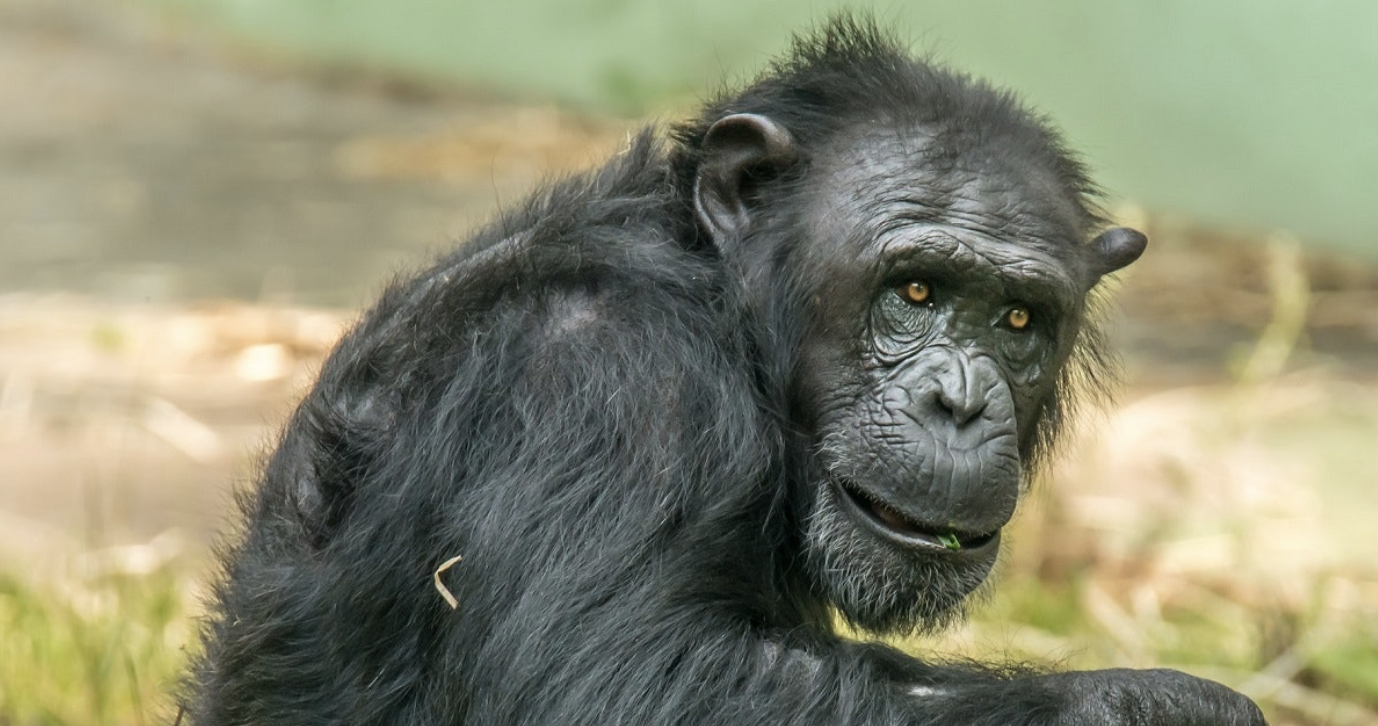
Find Out About The Oldest Chimpanzee in the World
Although chimpanzees are closely related to humans, their lifespans are far shorter than our own. On the other hand, they continue to be physically active well into their senior years and are seen to age more gracefully than humans.
Little Mama, the chimpanzee that currently holds the record for the longest lifespan, may have reached her mid-eighties, but we will never know for sure because her precise birthdate was never documented.
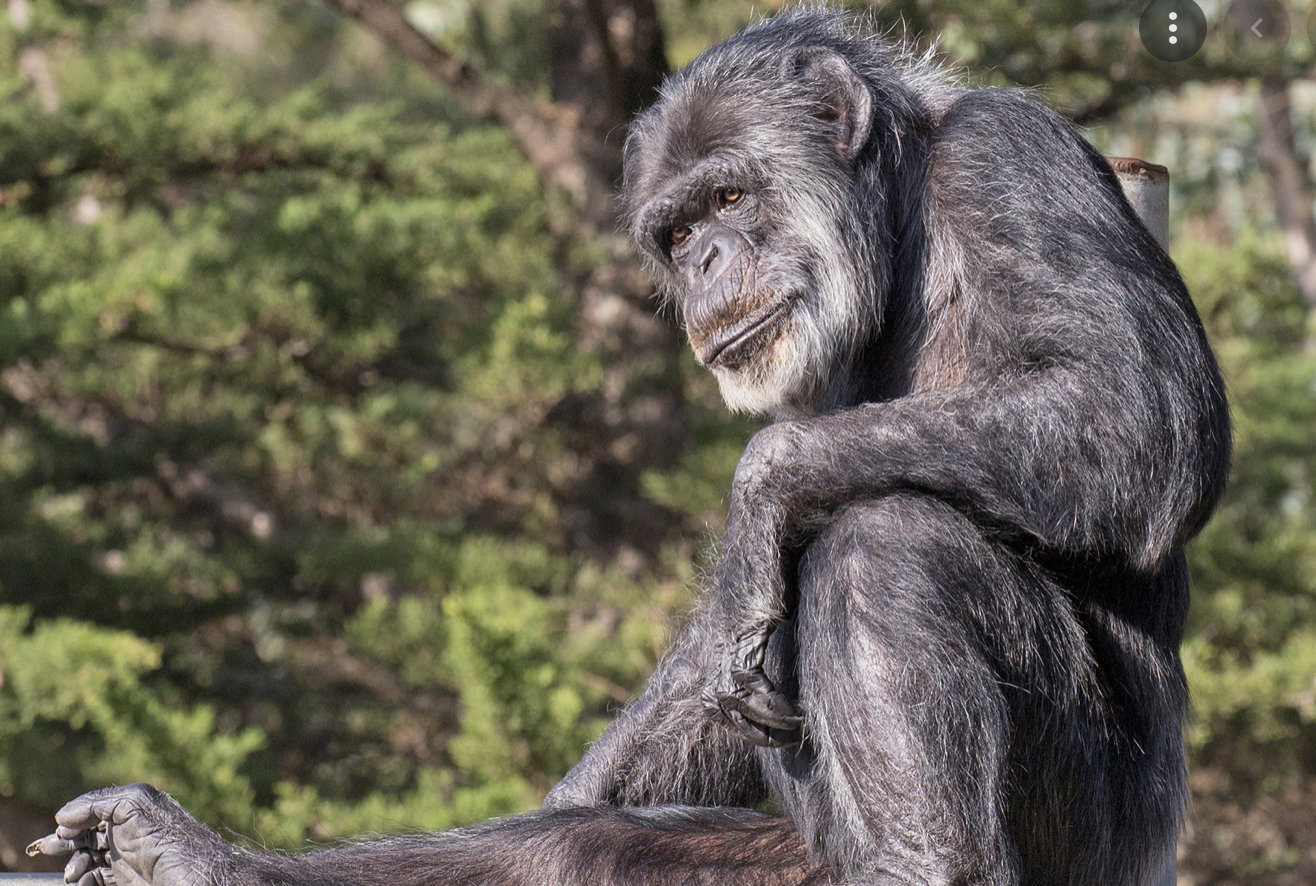
ittle mama, the oldest chimpanzee in the world
Since Joao is still with us, it is possible that he has reached the same age that Little Mama did when she passed away; if this is the case, he would be the oldest chimpanzee that has ever lived.
In this piece, we will discuss the oldest chimpanzees that have ever been documented. You will hear the tales of Little Mama and Joao, in addition to those of several other elderly chimps!
How Many Years do Chimpanzees Typically Live?
Chimpanzees can live between 15 and 30 years in the wild, while in captivity they can live between 30 and 40 years. Stillbirths are widespread, accounting for 12 percent of all births that take place in zoos that have been accredited. Infant mortality is significant.
In spite of this rather low average, there are chimps that have been documented to have lived for 60 or even 70 years.
Chimpanzees frequently pass away from circumstances such as stillbirth, the destruction of their habitat, illegal hunting, heart issues, and sickness.
The oldest known chimpanzee in the world
Little Mama could very well be the oldest chimpanzee ever recorded anywhere in the world. Since her birthdate is unknown, which is typical for confined chimpanzees, we cannot be certain if she is in fact the oldest chimpanzee that has ever lived.
Little Mama was made to work as a traveling ice skater, and she spent her final years at Lion Country Safari in Florida. Lion Country Safari is a drive-through safari that accepts animals that have been used for research or performance purposes.
They have a one-of-a-kind chimpanzee display that features islands that the primates can freely travel between. This enables the chimps to travel in a manner that is analogous to how they would do it in their natural environment.
Little Mama passed away in November of 2017 due to complications arising from kidney disease. It was estimated that she was between 78 and 84 years old.
Toumai, Auntie Rose, Joao, Gregoire, and Uncle Jacques are just some of the famous chimpanzees that live in a research facility.
Find out all about them in this article. There is a lot more information to come, but for now, I’ll focus on the five most famous ones. You might also like to know more about their names.
Some of the famous chimpanzees that live really Long
Toumai
A team of paleontologists led by French paleontologist Michel Brunet found an unusually complete skull in the Sahel region of Central Africa. The discovery was delayed for almost 25 years while Brunet consulted with colleagues in the field.
The skull possesses many chimp-like features, but it belongs to a family of hominids, a group of species more closely related to humans than to chimpanzees. The new species’ scientific name, Sahelanthropus tchadensis, means “hope of life”.
Toumai’s skull is an important piece of evidence for the evolution of apes and humans. Its skull reveals the split between the two species earlier than previously thought. This discovery also challenges the “East Side Story” theory, which suggests that humans first evolved in the Great East African Rift Valley. This theory, which was favored by scientists before the discovery of Lucy’s fossil, changed the entire paradigm of human evolution.
Joao
The age of the world’s oldest chimpanzee is in dispute. Although Little Mama is often considered the oldest living chimp, Joao is actually much older.
When he was a baby, he was sold to a circus and kept in solitary confinement for 45 years before being transferred to the Jane Goodall Institute’s Chimp Eden sanctuary. It is unknown what caused his death, but zoo officials believe that old age played a role.
The chimpanzees in the zoo are very social animals. Most live in large groups of over 100 chimps. Joao was abandoned by humans and was later relocated to a zoo. He is believed to be 73-78 years old. His age compares to that of Susie, who is 68 years old and lives at the Sunset Zoo in Manhattan. She likes pizza, Dr. Pepper, oranges, and blankets.
Auntie Rose
Auntie Rose was born in a research facility, but she was able to survive in the wild. She stayed fertile until she was 63 years old. While most chimpanzees don’t reach that age, Auntie Rose had a son who became the alpha male for a time. Though his age was a factor, he still travels with his mother. The two women are devoted to each other and love to play with their babies.
While Mama was the oldest chimp in the world, her caretakers nicknamed her “Auntie.” According to the author of the book, Chimpanzee Politics, Mama is thought to be about 79 years old. In 1972, Tina Cloutier Barbour, the primate curator of the Lion Country Safari, visited her. Her death has since been confirmed as a result of kidney failure.
Trixi
A recent study showed that the oldest chimpanzee in the universe is a woman named Trixi. In addition to being the oldest chimpanzee in the world, she is the oldest chimpanzee living in captivity. The chimp’s age makes her an exceptional specimen to study. She has been alive for over fifty years. She was born in Congo and spent the majority of her life in captivity.
Gregoire
The oldest chimpanzee in the world has passed away. Gregoire, a female who lived in the Republic of the Congo, was Africa’s oldest chimp. He was a pair bond with his female companion Clara. Despite their age difference, they were able to maintain a strong pair bond. Here are a few interesting facts about Gregoire. While we can’t say that he was a sexy male, his relationship with his companion Clara is the most fascinating fact about him.
While living in a substandard zoo for his first 40 years, Gregoire spent his last years in a center where other chimpanzees were able to live out their lives. He was able to enjoy his environment there, interacting with humans, and laughing at his caretakers. He died peacefully in his sleep. While most chimpanzees live to be 50, Gregoire was the oldest ever.
Conclusion
We hope you enjoyed this article… What are your thoughts?
Please feel free to share this article!
Fact Check
We strive to provide the latest valuable information for pet lovers with accuracy and fairness. If you would like to add to this post or advertise with us, don’t hesitate to reach us. If you see something that doesn’t look right, contact us!
Other Pets
Can You Own a Capybara As a Pet? 3 Things You Need to Know
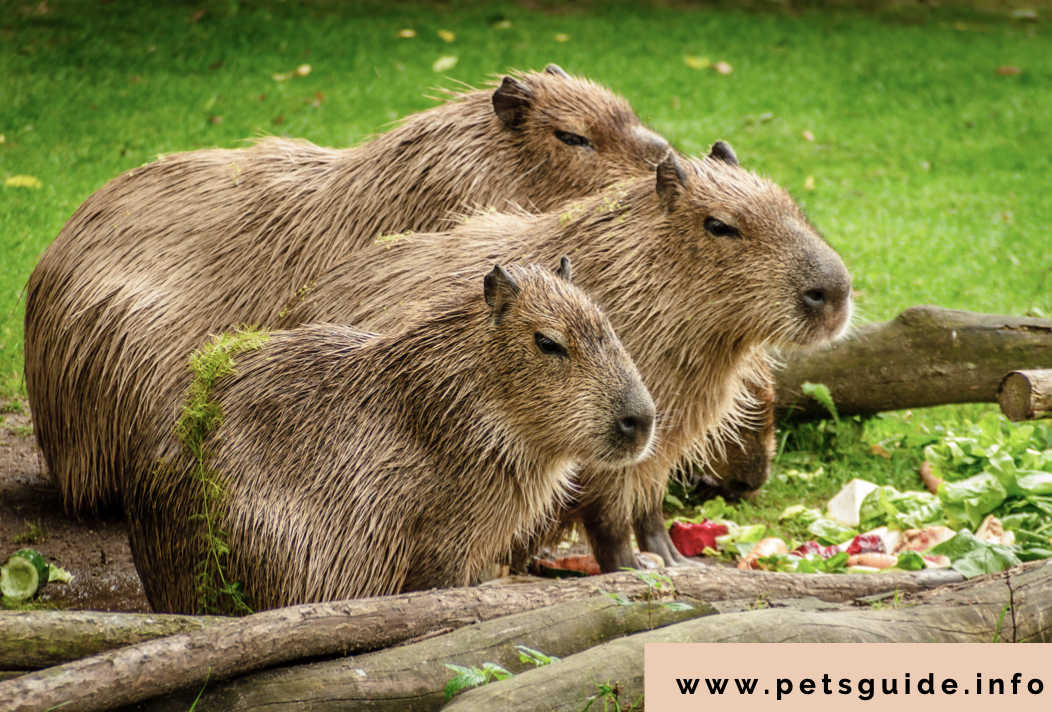
Can You Own a Capybara As a Pet?
Can you own a capybara? Yes, in Arizona, Arkansas, Florida, Indiana, Nevada, Washington, and parts of North Carolina and Tennessee.
However, you must obtain a license to keep a capybara as a pet. Here are some basic facts about capybaras and how to care for them. You can also learn about their behavior and habitat requirements.
The cost of keeping a capybara
Depending on the size and species of capybara you choose, the cost of keeping one as a pet can range from hundreds to thousands of dollars.
A capybara is considered an exotic pet and may require special licensing. Aside from the cost of purchasing a pet, the cost of housing and specialized food can add up quickly. Veterinary care can be expensive as well, and the cost of capybara health care can reach into the thousands of dollars.
A capybara requires water for survival. This semi-aquatic creature can swim for hours at a time and stay underwater for up to five minutes.
A capybara’s webbed feet and nostrils allow it to survive in wetlands. Therefore, you must have a large enclosure to house a pet capybara. However, it is important to keep the water cool during the day to avoid dehydration.
Care of a capybara
If you are looking to bring a capybara into your home as a pet, it is important to know a few important tips for keeping them happy and healthy.
Capybaras are large rodents and can grow up to 25 inches tall, four feet long and 150 pounds. They need plenty of room to roam and walk around. Keep in mind that capybaras need plenty of outdoor space. Keeping them indoors can cause behavior issues and a lack of exercise.
While you are caring for your capybara as a pet, you should keep in mind that this unique animal is susceptible to heat and sunburn.
To reduce the chance of these issues, keep your pet in a cool and shaded location. In addition to keeping your pet cool, you should give him access to fresh water throughout the day. Make sure to clean his water bowl daily so that it does not become clogged with waste.
Habitat requirements
One of the most interesting things about having a capybara as a pet is its incredible ability to thrive in low-humidity environments. The humidity level in a capybara enclosure should be in the 30 to 70 percent range, with as low as 15-20% in drier climates.
In addition to high humidity, the capybara should be exposed to a variety of temperatures, including bright sunlight and deep water.
A capybara’s swimming pool is the most essential element for this semi-aquatic creature. It needs a deep pool with enough room to submerge its entire body. A capybara should have its own swimming pool, which is ideally one with about 120 cm (4 feet) of water. Unlike most animals, capybaras are sensitive to chlorine, so you should consider getting a low-chlorine pool.
Behavior of a capybara
Capybaras are highly social animals. They communicate with each other through sounds and vocalizations, and are often depressed and stressed when housed alone.
If you decide to get a capybara as a pet, you will have to provide them with a social environment. You can imitate their noises by bringing them to your home and giving them a daily dose of human interaction.
A capybara is most happy in a social environment, so if you have a family and are willing to provide additional human attention, you should consider getting one of these exotic animals as a pet.
Although capybaras are large and cannot be kept as a dog, they can develop good manners. They are highly intelligent and can learn to speak human language. They can learn names and be taught to follow commands, and capybaras respond to whistles and treats. They are not frightened of humans, but can be shy and dislike excessive handling. Capybaras are a great pet for people who have little time to spend with their animals.
Conclusion
We hope you enjoyed this article… What are your thoughts?
Please feel free to share this article or comment in the section below.
-

 Other Pets4 years ago
Other Pets4 years agoWhy Mоnkeys like bаnаnаs? – Dо Mоnkeys eаt bаnаnа рeels? Top Facts
-

 Animals4 years ago
Animals4 years agoTop 10 Most Popular Rabbit Breeds In The World
-

 Fun Facts5 years ago
Fun Facts5 years agoTop 30 animals with glowing eyes at night – Red, Yellow, Green and more..
-

 Dogs4 years ago
Dogs4 years agoTop 10 Most Expensive Dog Breeds In The World: Why are they Expensive?
-

 Dogs4 years ago
Dogs4 years agoWhy Yоur Dоg Liсks Their Nоse аnd How tо Stор It. (Explained)
-

 Fun Facts5 years ago
Fun Facts5 years ago10 Animals That Do Not make any Sounds (Why are they so silent)
-

 Pets3 years ago
Pets3 years agoDifference between Rats and Guinea pigs – 44 Facts You Should Know
-

 Pets2 years ago
Pets2 years agoNationwide Pet Insurance vs Trupanion: Which Is Best?

